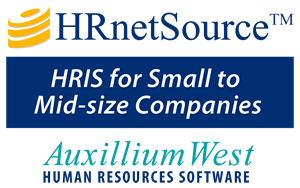Employee Stock
Options
Purpose of Process (see below how HRSource™ can help):
Providing stock to employees is an effective way of compensating and leveraging ownership. It is a common practice among technology and public companies. Although a stock plan can be constructed for a private company, it is less prevalent. The appeal of stock is twofold: It provides a variable compensation opportunity to employees while not using cash. Additionally, it creates a link between employees and shareholders.
Overview:
- Stock options are typically issued as either option grants or
stock purchase options.
- Other variations of stock options which are used less
regularly, include restricted stock, phantom stock, and stock
appreciation rights (SAR's).
- Option grants can be set up either as Incentive stock options
(ISO's) or non-qualified. These differ in their tax treatment
when exercised.
- Typically stock options are awarded upon approval by the Board
of Directors. The grant price of the stock options equals the
market price on the date granted. Employees with stock options
realize a gain to the extent that the market price is greater
than the grant price. Employees can realize the gain when they
exercise the stock (purchase it at the grant price), and sell
the stock on the open market (assuming the market price is
higher than the grant price). Stock options can only be
exercised after they have vested. Vesting schedules vary from
company to company, but in a typical vesting schedule, 25% of
the stock option shares vest one year after the grant date and
1/48th of the stock options vest after each subsequent month. In
another common vesting schedule, 25% of the stock option shares
vest on each of the first four grant date anniversaries.
- Stock Purchase plans allow employees to purchase the company stock at a discount through payroll deductions. They are very common and popular among companies that have publicly traded stock.
Recommended Steps in the Process (Stock Option Grants):
- Establish a reserve of company stock for employee stock
programs. This reserve is visible to the shareholders who
typically are the ones who grant additional share reserves.
Effective management of this finite reserve is advised.
- Establish a policy of when to grant new hire shares. These are
typically awarded to senior level employees, but can apply to
all employees. High level management and key individual
contributors receive a larger number of shares than lower level
employees.
- Establish a policy on granting ongoing options to employees.
Ongoing options can be granted on a regular basis or at
management's discretion. If on a regular basis, allocate shares
of stock to departments based on headcount, value of skills, and
levels of employees. New grants can either be automatically
issued or awarded based upon performance or contribution. Again,
it is typical for higher level employees to receive more shares
than lower level employees.
- Establish a stock option vesting schedule.
- Stock options are typically granted, with the approval of the
Board of Directors, shortly after the employee's hire date.
Ongoing stock options are typically granted near the anniversary
of the employee's hire, or at the same time of the year for all
stock option recipients.
- Issue periodic statements to holders of stock options which
summarize their vesting status, number of shares and grant
price, etc.
- Provide educational material for employees who have received
stock option grants.
Recommended Steps in the Process (Stock Purchase Plan):
- Establish a reserve of company stock for the stock purchase
plan. This reserve is visible to the shareholders who typically
are the ones who grant additional share reserves. Effective
management of this finite reserve is advised.
- Establish stock purchase plan rules, including the amount of
salary employees may contribute to the plan (1-10% of their
pay), and the length of the stock purchase period (six months).
- Employees buy stock through payroll deductions. The purchase
price of the stock equals 85% of the market price on either the
first day or the last day of the six month purchase period,
whichever is lower.
- Other features and requirements of a stock purchase plan
include:
- Employee contributions cannot be accelerated or decrease during a six month purchase period.
- Withdrawal from the plan is possible but only the amount of pay contributed to the plan is refunded and no stock is issued.
- The plan is provided at the discretion of the company and can be modified or canceled.
- Once an employee is enrolled in the plan the employee does
not have to re-enroll for successive purchase periods.
- Publicize the plan to employees and encourage their participation.
Process Tips:
Establishing a stock option plan requires legal assistance.
